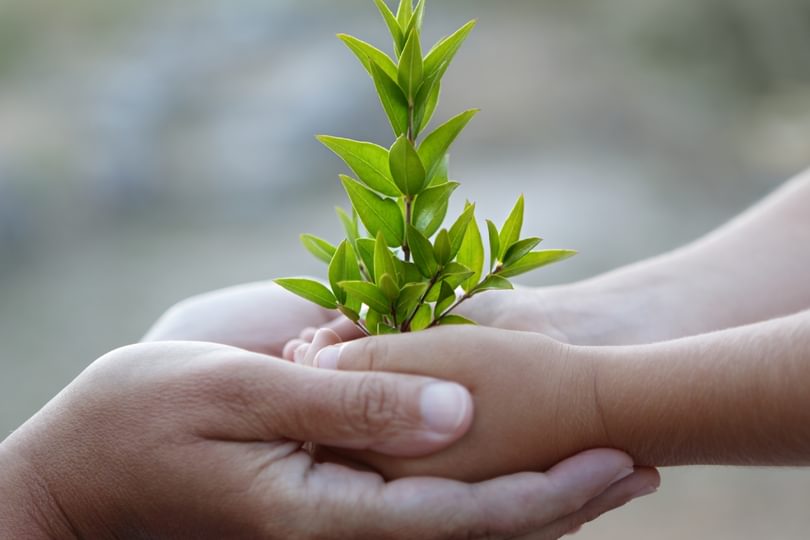
Research by Professor Liam Dolan, Co-Director, Plants for the 21st Century Institute, has shown that the first land plants were an important factor in global cooling that led to ice ages between 440 and 460 million years ago, highlighting how the invasion of the land by plants not only paved the way for the evolution of the first terrestrial ecosystems but also had a dramatic impact on Earth climate. Liam answers some of the most commonly asked questions, highlighting the importance of vegetation in the global climate system and emphasising that if we continue to wreck vegetation then we will pay the consequences.
1. What sort of plants existed 488-444 million years ago?
The fossil record tells us that the first plants to grow on land appeared sometime before 475 million years ago during the Ordovician Period. We only have fossilized remains of small fragments of plants but we don’t know how the bits fit together – a bit like a jig-saw puzzle with a lot of the bits missing. It is safe to say that these plants were very small and probably looked like liverworts and mosses - their closest living relatives.
2. How did the climate change during the Ordovician Period?
Climate changed dramatically during the late Ordovician Period. It changed from a climate that was warmer than today (with no ice) into an ice age. Ice ages are pretty rare in Earth history and what gave rise to the Ordovician glaciation has always been a mystery.
3. How did you test whether plants were the trigger for this change?
While increasing the amount of CO2 causes global warming, removing CO2 from the atmosphere causes global cooling. One of the dominant mechanisms for removing CO2 from the atmosphere is silicate weathering: the chemical reaction between silicate minerals of rocks and carbon dioxide in the atmosphere. We tested the hypothesis that non-vascular plants (mosses) increase rates of silicate weathering. To our amazement we found that these simple plants did in fact increase the weathering of silicate minerals. We then and incorporated these measurements of silicate weathering rates into computer models of Ordovician Period climate. When we re-ran the models with our new data, we discovered that the appearance of the first land plants in the Ordovician plants would have caused a dramatic decrease in atmospheric CO2 which would have brought about climate cooling and contributed to the initiation of the late Ordovician ice age.
4. What do your results show us about the influence of plants on climate?
We know that plants play a critical role in climate system by pulling CO2 out of the atmosphere in two ways. Firstly plants carry out photosynthesis, which converts CO2 into plant biomass that store carbon. Secondly plants increase rates of silicate weathering, the chemical reaction that breaks down rocks and in so doing removes CO2 from the atmosphere. We knew that the dramatic cooling of the Planet between 300 and 200 million years ago was the result of the evolution of large plants with large rooting systems that caused huge changes in both of these processes. In the results we published today we showed that the appearance of the first land plants had an effect much earlier - 100 million years earlier. For me the most important take home is that the invasion of the land by plants – a pivotal time in the history for the Planet – brought about huge climate changes. It should also remind us that the removal of large areas of the world’s vegetation which act as carbon stores, will increase atmospheric CO2 levels and cause dramatic climate change.
5. What is the role of plants in climate change today?
Our discovery emphasizes that plants have a central regulatory role in the control of climate: they did yesterday, they do today and they certainly will in the future. This study warns us that if we continue destroy the Earth’s vegetation, by felling forests and draining wet lands, we will suffer dramatic climate change: the opposite of an ice-age. That’s called global warming.
- Read the paper in Nature Geoscience
This opinion piece reflects the views of the author, and does not necessarily reflect the position of the Oxford Martin School or the University of Oxford. Any errors or omissions are those of the author.
